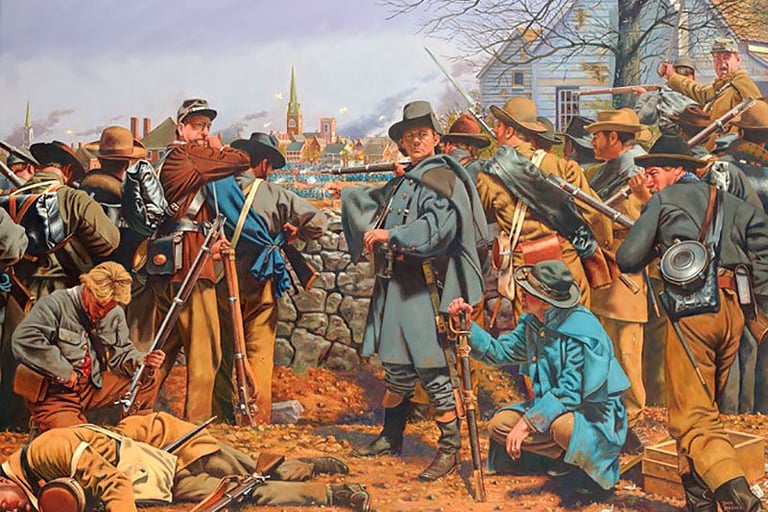The American Civil War
COMMUNITY
SDue to its position on the railroad, Rock Hill became a transfer point for Confederate soldiers and supplies moving to and from the front. Since there was no local hospital, townspeople nursed sick and wounded soldiers in their homes. Refugees fleeing the coastal blockade or General Sherman's troops, also came to Rock Hill.[9]: 39


American Civil War
[edit]
Shortly before the American Civil War began, a census had been taken of the population in York County where Rock Hill is located. Half of the district's 21,800 residents were enslaved people, integral to local cotton production. The 4,379 white males in the county formed fourteen infantry companies; some of the men joined cavalry or artillery units instead. By the end of the war, 805 of these men had died, and hundreds more were wounded. Men from Rock Hill and York County were involved in many of the major Civil War battles.[9]: 35
Due to its position on the railroad, Rock Hill became a transfer point for Confederate soldiers and supplies moving to and from the front. Since there was no local hospital, townspeople nursed sick and wounded soldiers in their homes. Refugees fleeing the coastal blockade or General Sherman's troops, also came to Rock Hill.[9]: 39
Beginning in the spring of 1862, local area farmers switched from cotton to corn in order to produce more food.[9]: 39 Records show that prices in Rock Hill changed frequently during the war, reflecting both shortages and the inflation of the Confederate paper money.[9]: 41
Confederate General P. G. T. Beauregard set up a temporary headquarters in Rock Hill on February 21, 1865.[9]: 41 He ordered the roads to Charlotte blocked to try to prevent General Sherman from reaching the city; Sherman ultimately went in a different direction.
When General Lee surrendered at the Appomattox Court House, it was actually a future Rock Hill resident who was responsible for waving the white flag. Captain Robert Moorman Sims, a farmer from Lancaster County, was sent by General James Longstreet to inform Union troops that the Confederate troops wanted a truce.[9]: 42



